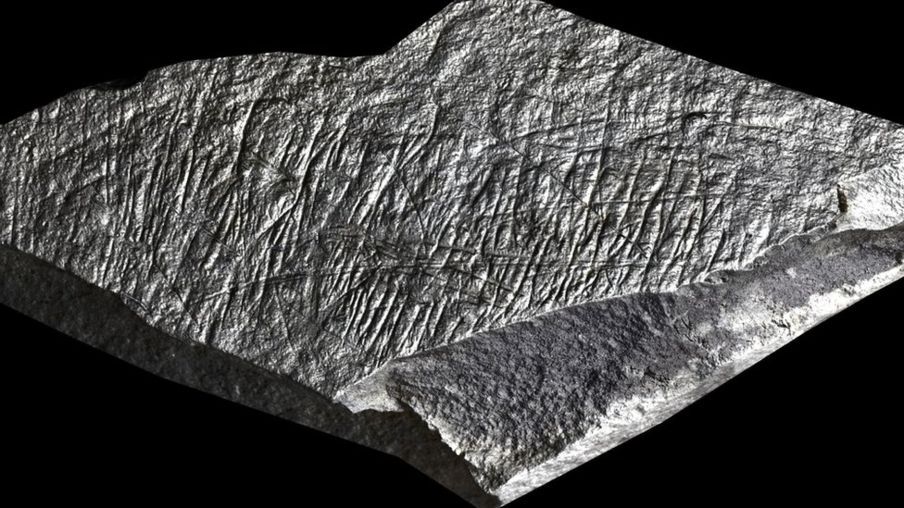

Archaeologists have dug up an astonishing find – a set of stone markings that appear to be the oldest art ever found in the British Isles.
A set of stone pieces carved with lines are thought to be at least 14,000 years old was dug up as part of the Ice Age Island dig at Les Varines in St Saviour.
That dig has been going on for the last five years, and the most recent results seem to show that it’s on the location of a hunter-gatherer camp that’s among the earliest in the whole of northern Europe.
Researchers say that the settlement sits on top of an ancient cliff line and geological investigation has shown that the camp probably sits in a small saddle in the landscape between an old sea stack and rising ground to the north - they say that would have afforded a degree of protection from the weather during a period when the climate was still relatively cold.
The Les Varines site dates toward the end of the last ice age and was occupied by modern human hunter-gatherers of the Magdalenian culture, who reoccupied northern and western Europe between 16 and 13,000 years ago. Hunting animals like reindeer and horse, they left a rich record of sophisticated stone age technology and spectacular works of art including the cave paintings at Altamira and Lascaux.
The team is waiting for results dating bone fragments found at the site to find out exactly when the site dates back to.
The work by the team of archaeologists – and the publicity generated by the BBC’s prime-time coverage of it, which is set to continue next year – means that the Island is now emerging as a key location for understanding human evolution, expansion and survival over a quarter of a million years of climate change.
Archaeologists have been uncovering how our Neanderthal cousins survived in northwest Europe and new cutting-edge research has revealed for the first time what the Ice Age landscape at La Cotte in St Brelade would have been like and how Neanderthal society worked.
And the work has been brought to life by a new exhibition at Jersey Museum that features a life-size Neanderthal model. Jersey: Ice Age Island is based on a concept created by the Natural History Museum and includes dedicated Ice Age walking trails around the Island, an Ice Age walking guide and virtual tours.
The archaeologists' big digs have been funded by a £199,000 grant from the Tourism Development Fund and they are hoping to secure further funding next year to come back and unearth more and give the Island further International exposure.
The exhibition, sponsored by Capco Trust, runs at Jersey Museum until the end of next year and the project will be featured on national television on programmes including Coast and Ice Age Britain in 2015 and Digging for Britain which will be aired on the BBC in the New Year.
Jon Carter, Director of Jersey Heritage said: “Jersey has an exceptional record of early stone age archaeology for such a small island, and this exhibition show cases these sites and the science behind research currently being undertaken by the Ice Age Island team.
"This research, supported by the States of Jersey Tourism Development Fund and Capco Trust, is bringing to light new stories from Jersey’s deep Ice Age heritage and continuing to show that the Island, with exceptional sites such as Les Varines and La Cotte de St Brelade is a scientific treasure trove.”
Pic credit: Dr Sarah Duffy
Comments
Comments on this story express the views of the commentator only, not Bailiwick Publishing. We are unable to guarantee the accuracy of any of those comments.